An Empty Landscape
On France by Bruno Dumont
In Bruno Dumont’s latest film, we are introduced to France, a stunningly beautiful news anchor who bears the same name as the film’s title – and the country where the film is set. We meet France and her assistant Lou at a press conference by the French president. Dumont does not exactly try to make his scenes look realistic. France’s intimate interview with Emmanuel Macron is obviously fake; the shot and countershot are filmed with different cameras and the special effects are all too transparent. That is the whole idea; the image of Macron does the work. His responses to journalists’ questions are interchangeable. His diplomatic answer does not match France’s question, but fits at the same time all possible questions. President and journalist enjoy playing their roles in the media game.
France does not wait until Macron has finished speaking to show her excitement. Her performance is complete; the cameras have seen her ask a question. No reason to listen to the president any longer. Lou texts France hearts and signals that Twitter is exploding. The press conference has become a grotesque display, a non-event that generates its own newsworthiness. The journalist and the president utter words, Twitter explodes, and nothing has happened.
Film critics were rather divided on France. Many of them did not quite know what to make of the film. Jonathan Romney, for instance, wrote that “this satire about media, emotional alienation and – need it be said? – the state of the nation makes its point quickly and forcefully before going on to make it again and again, with different modulations, for over two hours”.1
Dumont rubs our noses in what we already know. We know that the media circus is a farce. And perhaps even worse: the object of derision itself, the media, is well aware of this. The media are not being “exposed” here for two hours. Everyone already knows that news items are directed and scripted, and that the public is constantly whipped up with spectacular reports and photogenic journalists. Equally predictable is the emotional alienation among the Western elite that Dumont seems to be criticising. France is rich and has a house filled with design and art but the house feels empty. She has a cold relationship with her husband and son, characters that only serve to illustrate her loneliness. This, too, is nothing new. Everyone knows this situation and has learned to live with it.
As satire, France does not exactly feel biting. Conflicts, tensions and issues are raised, but each time something seems to be missing. Nothing is ever completed, and this lack is palpable. While the film starts out by sketching “the media circus”, we as spectators gradually adjust our expectations, until by the end of the film we are as lost as the main character. What makes it so fascinating is the very fact that the film seems to steer away from its own premise, as if France wants to get away from itself. The parable is dissolved, creating a space in which the figure of a journalist is performed “with different modulations”, like in a poem. The film does not appear to have anything to tell us, offering a topographical exploration of the empty media landscape. In this text, we explore this view and the ways in which Bruno Dumont has placed his characters in it.
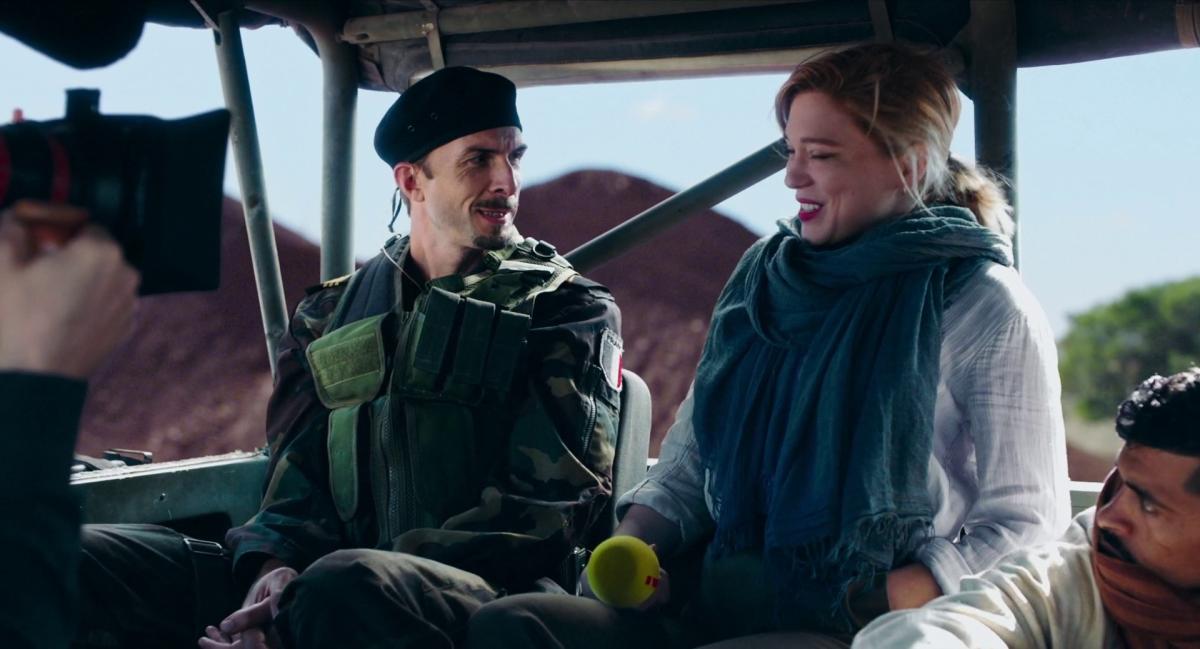
The Model
France travels the world for a living. The reports she makes are set in a landscape that serves as a backdrop, with interchangeable locals. There are no specific places; there is always a war somewhere. When she drives through Paris with her assistant, the city is suggested by means of green-screen images. France is the central body and face in the image, the world and the news are mere backdrops.
A banal accident shatters her bubble. She inadvertently accelerates in a traffic jam, hitting a delivery boy. After all the dead and wounded she witnessed while reporting, the reality of the wounded boy makes a deep impression on her. Dumont calls the incident an “irruption of reality”.2 It turns her entire life upside down. She cries incessantly, quits her job and retreats to a resort, only to make a comeback later. “Irruption” indicates both a breakthrough and a disruption of reality. The accident suddenly seems to bring her into contact with a “regular boy”, who feels more real than the staged war reports she is used to. We recognise this scooter courier not so much from everyday life as from Dumont’s oeuvre. The reality of France is disturbed by a character who does not fit in with the other characters we see in the film. He is a dissonant figure.
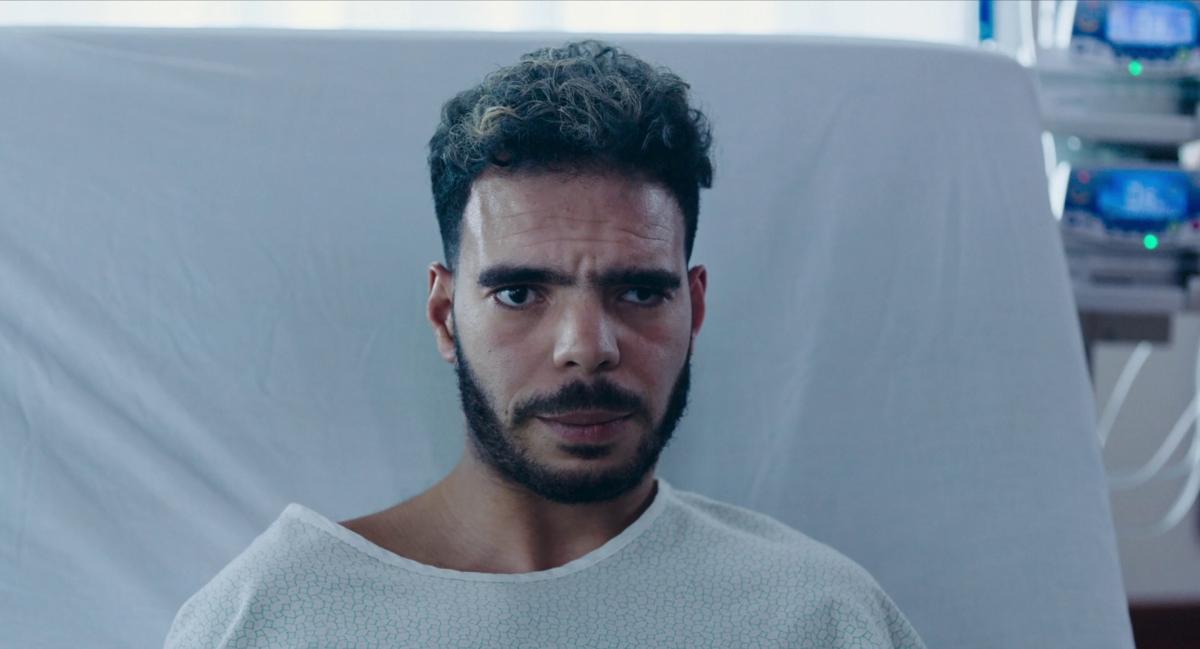
The delivery boy was selected for the socio-cultural background etched into his body. We recognise the same typecasting in the series P’tit Quinquin and in other films by Dumont set in his native region of northern France. Dumont casts his characters according to their appearance. He chooses people with crooked teeth, uneven legs or other abnormalities, creating a dialectic of love and malicious pleasure. Dumont usually works with non-actors. Léa Seydoux is a notable exception. About that choice, he said, “In my eyes, she’s practically a non-professional actress. By which I mean that she is already what she needed to be [for the film]. There wasn’t much to do, actually. It was quite easy to direct her.”3 Top model and world-famous actress Léa Seydoux could thus be typecast as a TV personality.
In the same interview, Dumont said that during the filming it became clear that Seydoux was able to cry at will. “I exploited that skill of hers.” France’s tears display Seydoux’s acting talent; they are not an expression of her state of mind. They come from the superstar herself, who for Dumont is already “what she needed to be for the film”.
Dumont is often compared to Robert Bresson, whose directing of actors revolved around “being,” or être, (modèle) rather than “appearing”, or paraître (acteur).4 For Bresson, the soul was to be found in the form of the body, not in psychology. Dumont violates Bresson’s method by starting from the model’s form of appearance. He treats his actors as models not because the inner self is unknowable but because the outer form is all that exists.
Is there still an inner world when one’s être and paraître coincide completely? Seydoux cries incessantly. It is an acting tour de force: not many people are able to produce such tangible evidence of sadness at will. Yet it is reminiscent of a pornographic act. Pleasure, pain, excitement and grief are reduced to mechanical secretions. The character of France thus becomes what might be the most radical expression of a model: an empty form, without a soul.
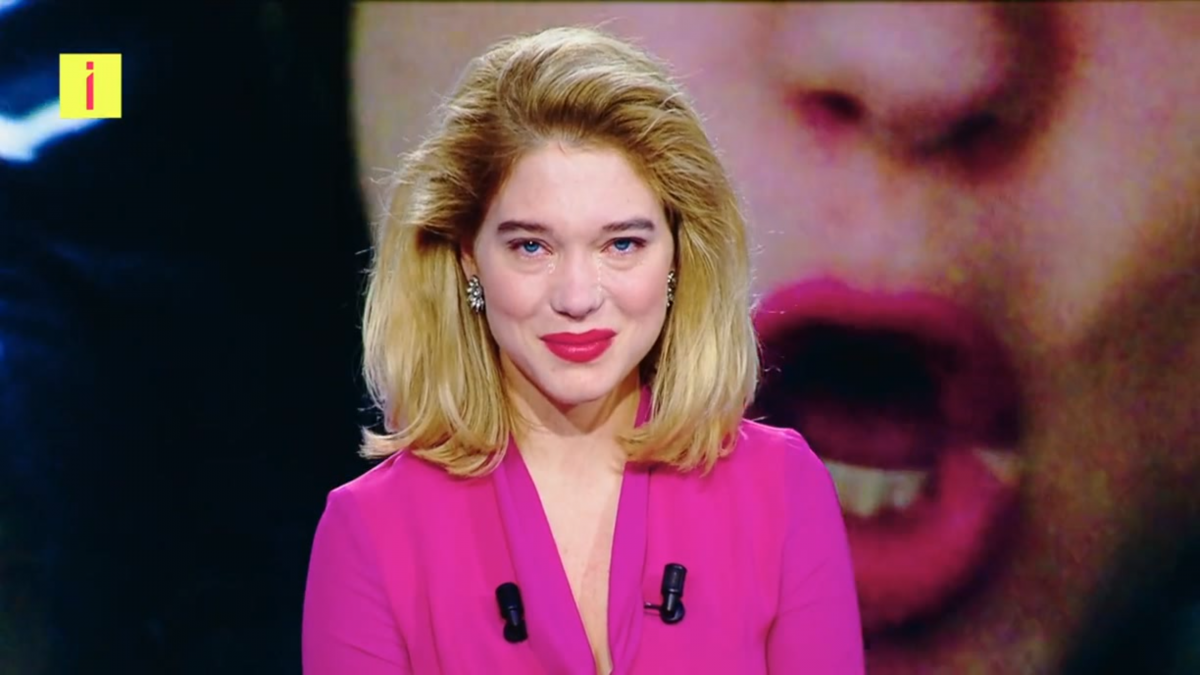
Crash Test Dummies
Two car crashes happen in France’s life. In the second accident, two lives are literally turned upside down: revolving on its axis, the car containing her husband and son plunges off a cliff and smashes into the rocks. Both are dead.
The scene begins with a drone image of the car in which father and son lurch along a mountain pass by the ocean. We see shots of their faces, a flat tyre, the collision with a truck, the fall off a cliff and the car wreckage on fire. Each shot lasts far too long and the music is repeated several times. Dumont refuses to turn this into a “proper” spectacular scene. He uses tiny cameras on a drone, on the roof or under the bonnet of the car and sticks those images together seemingly at random.
The man and child could have been crash test dummies. It is not an emotional scene. They are puppets in the spectacle of the crash. The crash test dummy as another kind of radical “model”. While the first accident thoroughly disturbed France’s reality, little seems to change after the second accident. France’s home remains as cold as before. After the accident, she seems to explore new empty depths in her work. For her latest reporting job, she heads to the northern French countryside. She visits a woman who turned out to be married to a murderer. The film looks derailed once more, but instead explores a new texture.
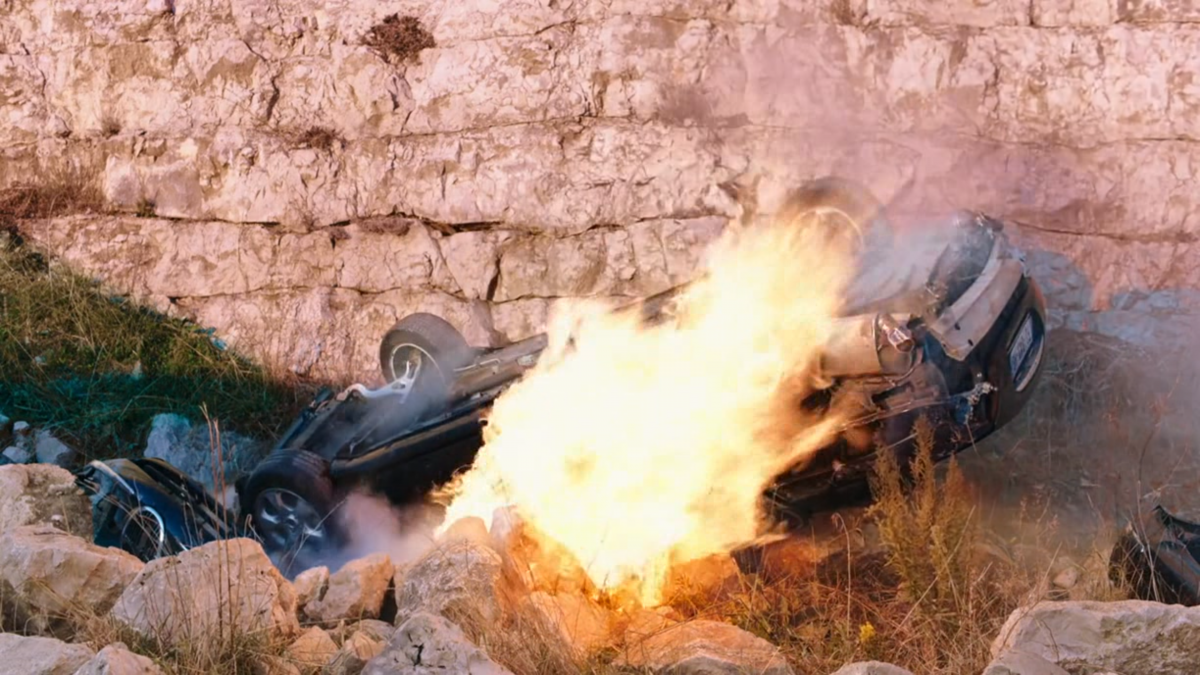
France was at home in the landscape of her reporting, in the Parisian landscape with its luxury flat full of design and art, in the landscape of an alpine resort. This is not where she belongs. While the delivery boy was an alien body in her world at the beginning of the film, she now becomes the alien body herself.
Her smooth film crew has been replaced by two boys awkwardly fumbling with their tripod and pointing the microphone in the wrong direction. The media machine seems to be falling apart, losing its credibility when manipulated by a non-actor, a non-professional, a “real person”.
After the interview, France takes a breath of fresh air, sighing: “What a tragedy. But what a beautiful landscape. Isn’t it?” She looks at her crew, who gaze at their shoes. They do not understand what France sees in the landscape. It is an image of northern France that we know all too well: soggy and bleak, with no striking beauty whatsoever. But France is struck by its emptiness.
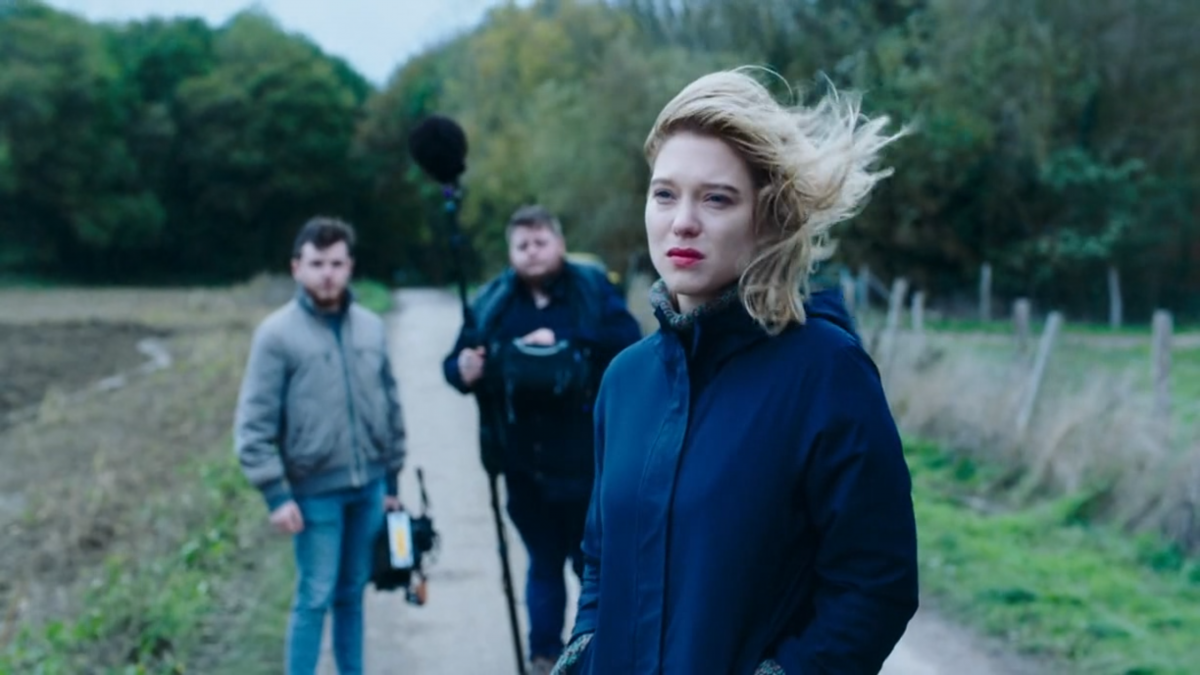
A Heavenly Emptiness
Dumont made several films inspired by the lives of saints, such as Joan of Arc or Hadewijch. France could be considered a postmodern saint. Her weeping face is reminiscent of Marie Falconetti’s face in Carl Theodor Dreyer’s The Passion of Joan of Arc (1928). The sublime tears of this Joan of Arc are moving because they address a God who remains absent. Her tears are linked to intense loneliness. To her despair, the saint cannot even figure out whether she has been abandoned by God or whether he was never there in the first place. She hopes for a sign but ultimately finds solace in its absence. The absence becomes the sublimely divine in which she can find consolation and in which she can lose her body and soul.
Joan of Arc finds consolation in absence when flames are licking her body; France finds consolation in emptiness at the sight of a petty crime. As she strolls through Paris with her new lover at the end of the film, someone is smashing a red shared bike nearby. Her journey started at the platitudinous interview with Macron, led to the woman whose husband turned out to be a murderer and ends at the sight of everyday vandalism. This bike completes the development. Tears now flow for the perfect object, no longer for a human body, but a bicycle that belonged to no one. There is no locality anymore – it comes from somewhere far away in Silicon Valley and falls at her feet like an alien object. The sight, however, overwhelms her. She turns her tear-stained face away and looks into the camera. There is no one there in the landscape.
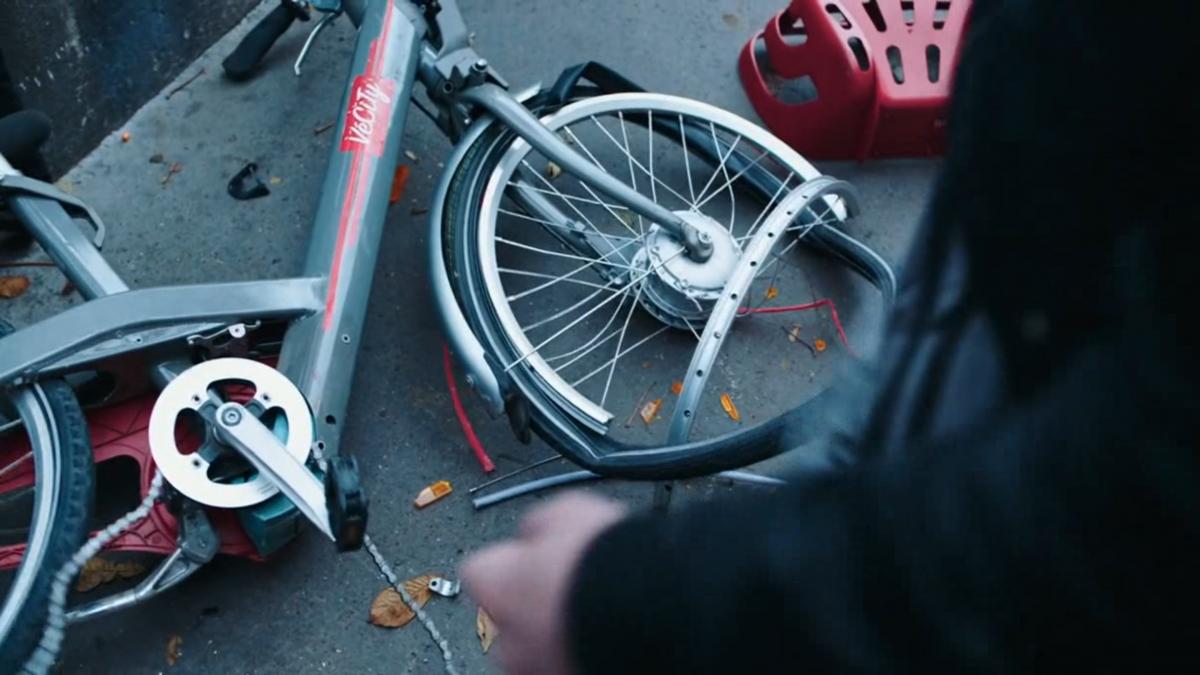
- 1Jonathan Romney, ‘France: Cannes Review’, Screen Daily, July 2021.
- 2Line-up Fastival de Cannes.
- 3“The Cinema Is a Risk You Run”: Bruno Dumont in conversation with Stephanie LaCava, Screen Slate, 9 December 2021.
- 4Robert Bresson, Notes on the Cinematograph, trans. Jonathan Griffin (New York: New York Review Books, 2016).
Images from France (Bruno Dumont, 2021)

